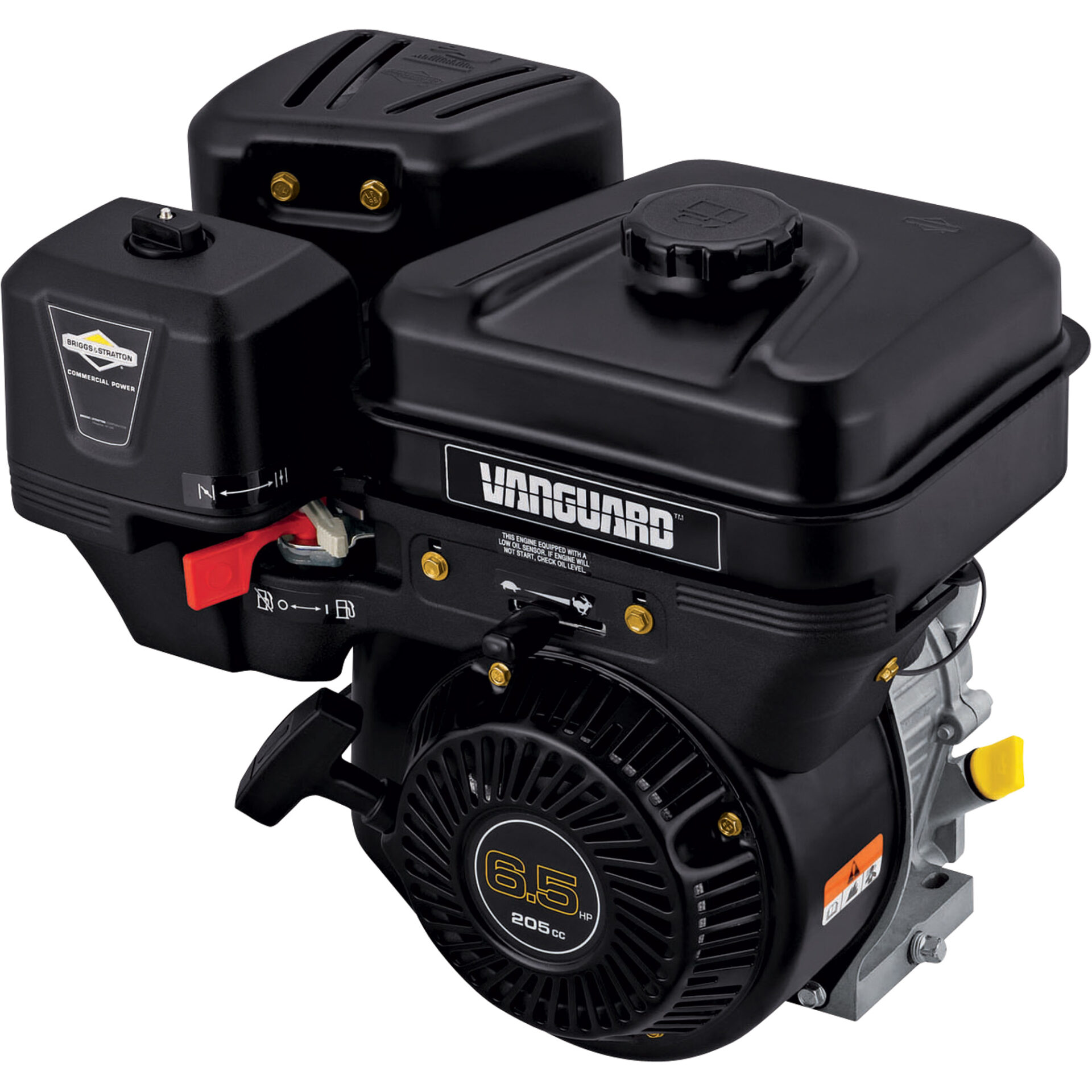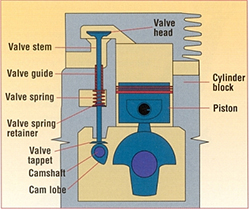Briggs & Stratton engines are reliable and powerful. Yet, like all machines, they can have issues.
In this Briggs & Stratton Troubleshooting Guide, we aim to help you solve common problems quickly and efficiently. Whether it’s your lawn mower, generator, or any other equipment powered by Briggs & Stratton, this guide will provide you with practical solutions.
You don’t need to be an expert to follow these steps. We will cover the most frequent problems and their fixes in simple terms. By the end, you should be able to diagnose and repair many issues on your own. So, let’s dive in and get your engine running smoothly again!

Credit: www.powertripohio.com
Common Engine Issues
Understanding common engine issues is crucial for maintaining your Briggs & Stratton engine. This guide will help you troubleshoot and resolve these problems quickly. With clear steps and easy-to-understand language, you’ll be able to keep your engine running smoothly.
No Start Problems
One of the most common issues is the engine not starting. There are several potential causes:
- Fuel Problems: Ensure the fuel tank is full. Check for old or stale fuel, which can prevent the engine from starting.
- Spark Plug Issues: Inspect the spark plug for damage. Replace if necessary. Ensure it is properly connected.
- Air Filter Blockages: A clogged air filter can restrict airflow. Clean or replace the air filter.
- Battery Issues: For electric start models, check the battery charge. Replace if it is dead.
Stalling Issues
If your engine starts but stalls shortly after, consider these factors:
- Fuel Quality: Use fresh, clean fuel. Old fuel can cause stalling.
- Carburetor Problems: A dirty or malfunctioning carburetor can affect performance. Clean or repair as needed.
- Fuel Line Blockages: Check for obstructions in the fuel line. Clear any blockages to ensure proper fuel flow.
- Oil Levels: Ensure the oil level is correct. Low oil can cause the engine to stall.
By following these tips, you can diagnose and fix common Briggs & Stratton engine issues. Regular maintenance and timely troubleshooting will ensure your engine operates efficiently.
Fuel System Troubles
The fuel system is crucial for your Briggs & Stratton engine. Issues here can cause major headaches. This section addresses common fuel system troubles. Solve these to keep your engine running smoothly.
Fuel Line Blockages
Fuel line blockages can stop your engine from running. Check the fuel line for clogs. Dirt and debris often block the fuel flow. This restricts the engine’s fuel supply.
Inspect the fuel line regularly. Remove any visible debris. If the fuel line is cracked, replace it. A clear fuel line ensures smooth fuel flow.
Carburetor Problems
The carburetor mixes air and fuel for the engine. If it’s not working, the engine may stall or run rough. Check for dirt in the carburetor. This dirt can block the fuel passage.
Clean the carburetor with a carb cleaner. If the problem persists, rebuild or replace it. Proper carburetor function is key to engine performance.
Ignition System Faults
The ignition system is crucial for Briggs & Stratton engines. It ensures the engine starts and runs smoothly. But, faults can occur. Let’s explore common ignition system faults.
Spark Plug Issues
Spark plugs ignite the fuel-air mix in the engine. Dirty or worn spark plugs can cause problems. Check the spark plug for dirt or damage. Clean it with a wire brush if dirty. Replace it if worn or damaged. Ensure the spark plug gap is correct. Use a spark plug gap tool for this. A correct gap ensures efficient engine start and operation.
Ignition Coil Problems
The ignition coil generates the spark for the spark plug. A faulty ignition coil can prevent the engine from starting. Check the ignition coil for cracks or damage. Use a multimeter to test the coil’s resistance. Compare the reading with the manufacturer’s specifications. Replace the coil if it is not within the range. Ensure all connections are secure and free from corrosion.
Air Filter Concerns
The air filter is a vital part of your Briggs & Stratton engine. It ensures clean air reaches the engine. This keeps the engine running smoothly. If the air filter gets dirty, it can cause many problems. These problems include poor performance and higher fuel consumption. Understanding air filter concerns can help you maintain your engine better.
Dirty Air Filter
A dirty air filter can block airflow to the engine. This makes the engine work harder. It can also lead to poor fuel efficiency. You might notice the engine running rough or even stalling. Regularly check the air filter. This helps avoid these problems.
To check the air filter, first, locate it in the engine. It is often inside a plastic or metal cover. Remove the cover and take out the filter. Look at the filter closely. If it appears dirty or clogged, it is time to clean or replace it.
Replacement Tips
Replacing the air filter is an easy task. First, buy the correct filter for your engine model. You can find this information in the owner’s manual. Next, remove the old filter. Clean the area around it to remove any dirt or debris. Insert the new filter into the same place.
Make sure the filter fits snugly. Put the cover back on and secure it. Regular replacement ensures your engine runs efficiently. It also extends the life of your engine.
Oil System Challenges
Briggs & Stratton engines are known for their reliability. But, like any machinery, they can face challenges. One common area of concern is the oil system. Proper maintenance is key to ensuring your engine runs smoothly. Below, we will explore common oil system issues and how to address them.
Oil Leaks
Oil leaks are a common issue in Briggs & Stratton engines. They can occur due to worn gaskets or seals. Inspect the gaskets for any signs of wear. Replace them if necessary. Another reason for oil leaks can be a cracked engine block. Check the engine block for any visible cracks. If you find a crack, consult a professional for repair or replacement.
Low Oil Levels
Low oil levels can lead to engine damage. Always check the oil level before each use. Use the dipstick to ensure the oil is at the correct level. If the oil is low, add the recommended oil type. Regularly monitor oil consumption. If your engine consumes oil quickly, it may indicate a problem. Look for leaks or worn parts. Address these issues promptly to avoid engine damage.
Battery And Electrical Issues
Battery and electrical issues often trouble Briggs & Stratton engines. These problems can stop your engine from starting. Understanding these issues helps in quick troubleshooting and repair. Let’s dive into some common problems and solutions.
Dead Battery
A dead battery can prevent your engine from starting. Check the battery voltage first. A fully charged battery should read 12.6 volts or higher. If the voltage is low, recharge the battery. If it doesn’t hold a charge, consider replacing it.
Corrosion on battery terminals can also cause problems. Clean the terminals with a wire brush. Ensure all connections are tight. Loose connections can prevent the battery from charging or delivering power.
Wiring Problems
Wiring issues can disrupt the electrical system. Inspect all wires for damage. Look for cracks, frays, or breaks. Damaged wires need replacement.
Loose connections can also cause problems. Check all connections and tighten them if needed. Ensure all wires are properly connected to their terminals. Incorrect wiring can lead to engine malfunction.
Overheating Problems
Overheating problems with Briggs & Stratton engines can be frustrating. If not addressed promptly, they can lead to significant damage. Understanding the causes and solutions for overheating is crucial for maintaining engine performance and longevity.
Cooling System Check
The cooling system is vital for preventing overheating. Regularly check the cooling fins for debris. Clean them with a brush or compressed air. Ensure the air intake is clear of obstructions. This allows the engine to cool efficiently.
Inspect the engine’s cooling fan. A damaged or broken fan can reduce airflow. Replace any faulty parts immediately. Also, check the oil level. Low oil can cause the engine to overheat. Maintain the recommended oil level for optimal performance.
Heat Damage Prevention
Heat damage can be costly. To prevent it, avoid running the engine at high speeds for extended periods. Allow the engine to cool down after heavy use. This reduces stress on the engine components.
Use high-quality fuel and oil. Poor quality materials can increase the engine’s operating temperature. Follow the manufacturer’s maintenance schedule. Regular maintenance helps keep the engine in good condition and prevents overheating.
Store the engine in a cool, dry place. Avoid exposing it to extreme temperatures. Proper storage conditions help maintain the engine’s performance and longevity.

Credit: www.ebay.com
Maintenance Tips
Proper maintenance of your Briggs & Stratton engine ensures a long lifespan. Regular care prevents unexpected breakdowns and costly repairs. Follow these easy tips to keep your engine running smoothly.
Regular Inspections
Check your engine oil level before each use. This prevents engine damage. Look for any visible leaks or loose parts. Tighten any loose bolts and replace worn-out parts.
Inspect the air filter regularly. A dirty air filter reduces engine performance. Clean or replace it as needed.
Examine the spark plug. A clean spark plug ensures easy starting. Replace it if it’s dirty or worn out.
Seasonal Care
Before winter, drain the fuel system. This prevents fuel-related issues during storage. Use a fuel stabilizer if you prefer to leave fuel in the tank.
Check the battery and charge it fully. A fully charged battery lasts longer and starts easier.
In spring, change the oil and inspect the engine. Replace the air filter and spark plug if necessary. This ensures peak performance for the new season.
Keep your engine clean. Remove dirt and debris after each use. This helps prevent overheating and other issues.

Credit: www.briggsandstratton.com
Frequently Asked Questions
What Is The Most Common Reason Why A Briggs & Stratton Small Engine Wont Run Correctly?
The most common reason a Briggs & Stratton small engine won’t run correctly is a clogged carburetor. This restricts fuel flow.
Why Does My Lawn Mower Only Run For A Few Seconds Then Dies?
Your lawn mower may die after a few seconds due to a clogged carburetor, dirty air filter, or bad spark plug. Regular maintenance can prevent these issues.
Why Does My Briggs And Stratton Lawn Mower Keep Cutting Out?
Your Briggs and Stratton lawn mower may keep cutting out due to clogged air filters, dirty carburetor, bad spark plug, or stale fuel. Regular maintenance and checking these components can help resolve the issue.
Why Is My Briggs And Stratton Engine Not Cranking?
Your Briggs and Stratton engine may not crank due to a dead battery, faulty starter, or bad ignition switch. Ensure all connections are secure. Check the fuel supply and spark plug condition.
How Do I Fix My Briggs & Stratton Engine Not Starting?
Check fuel level, spark plug, and air filter. Ensure all parts are clean and functional.
Conclusion
Fixing Briggs & Stratton issues can be simple with the right guide. This troubleshooting guide offers clear, easy steps. Regular maintenance keeps your engine running smoothly. Follow the tips to solve common problems. Your engine will last longer and perform better.
Enjoy the reliability of Briggs & Stratton engines. Happy troubleshooting and smooth running!
